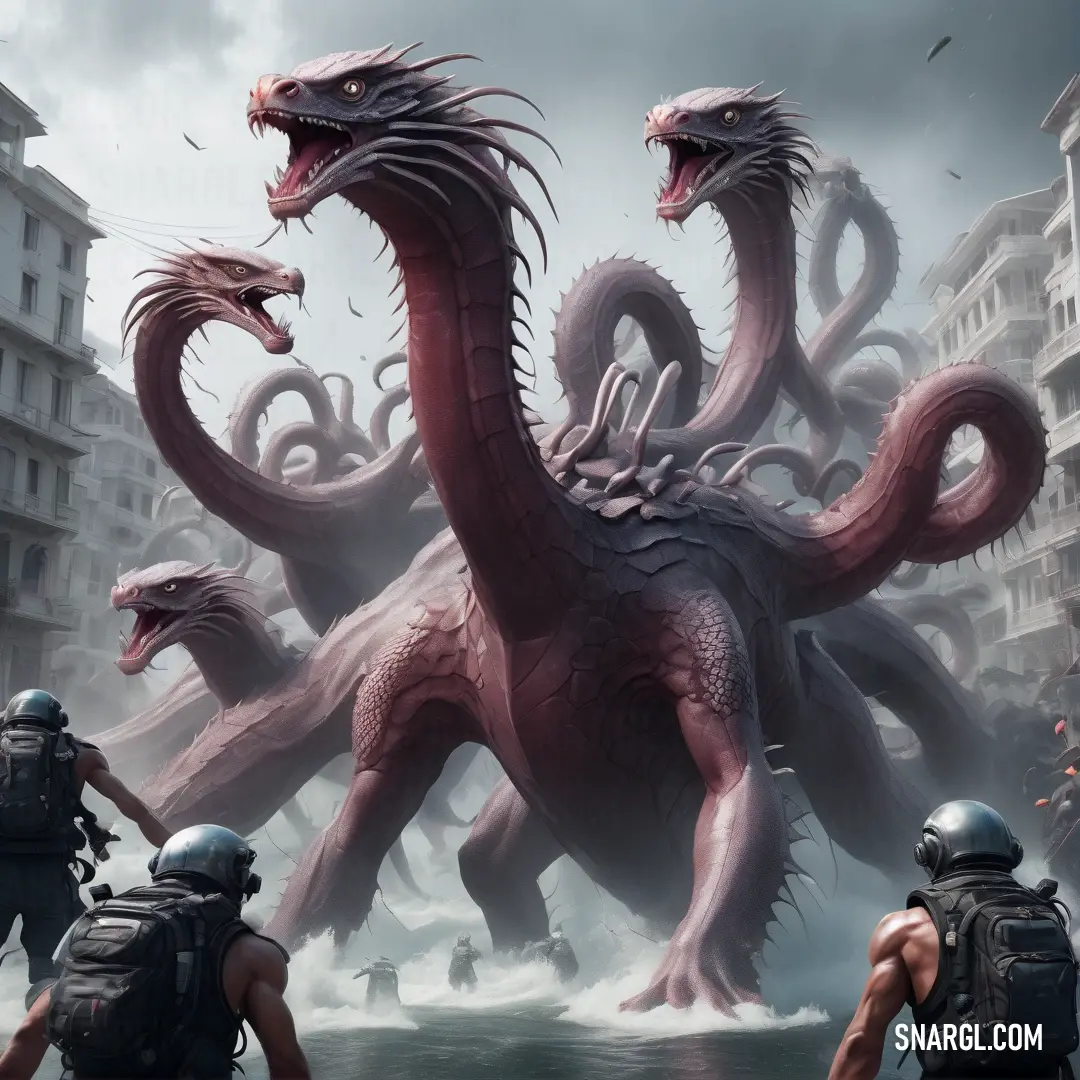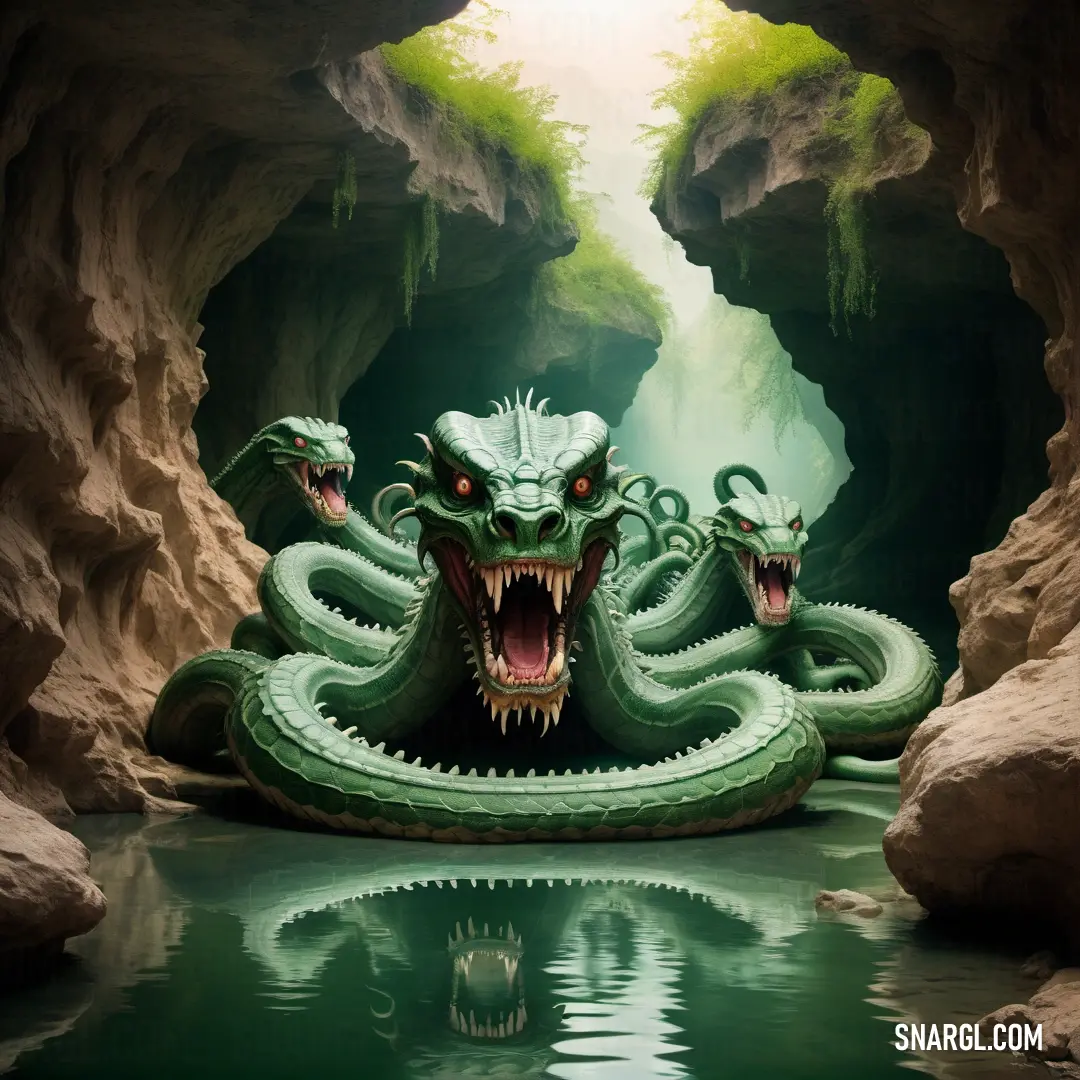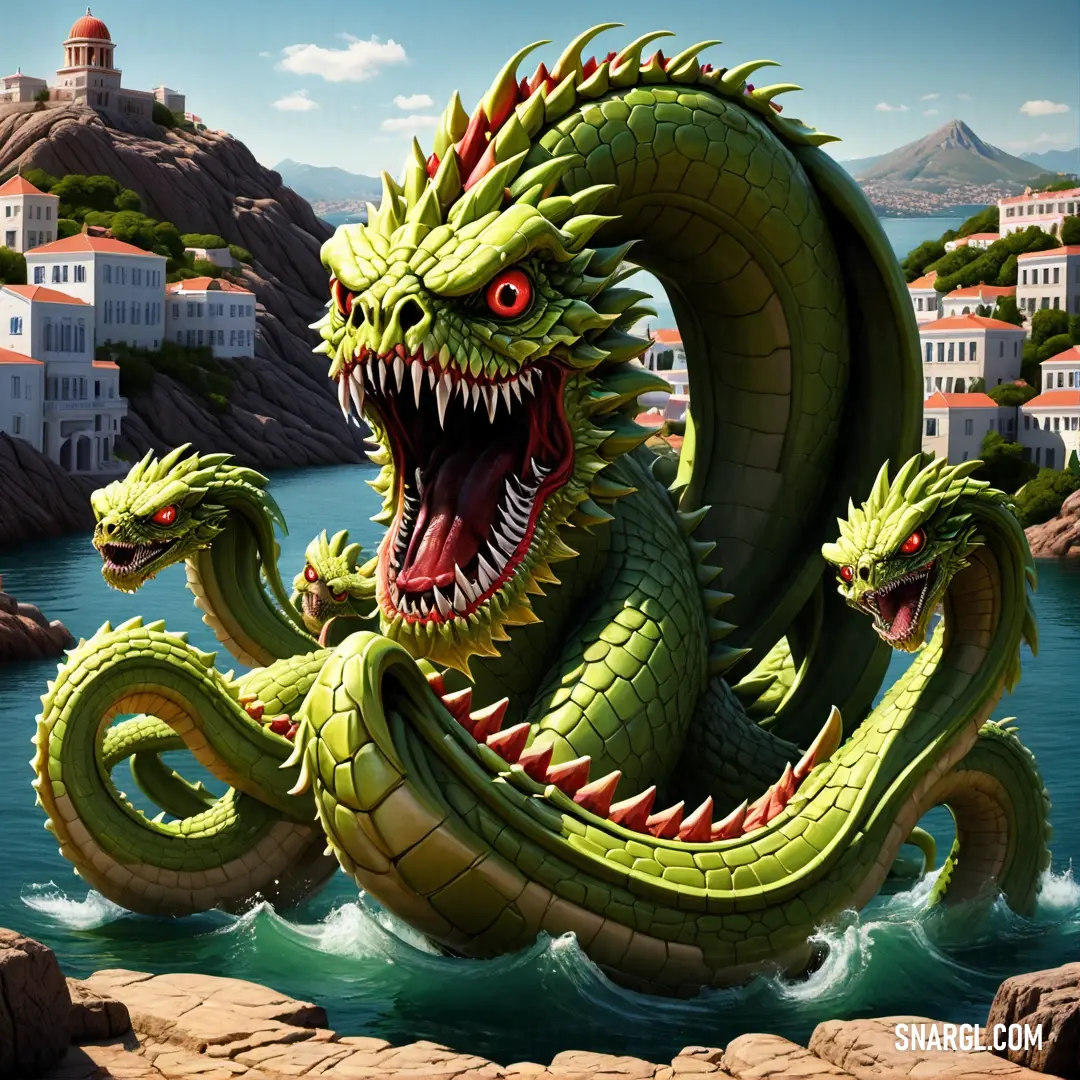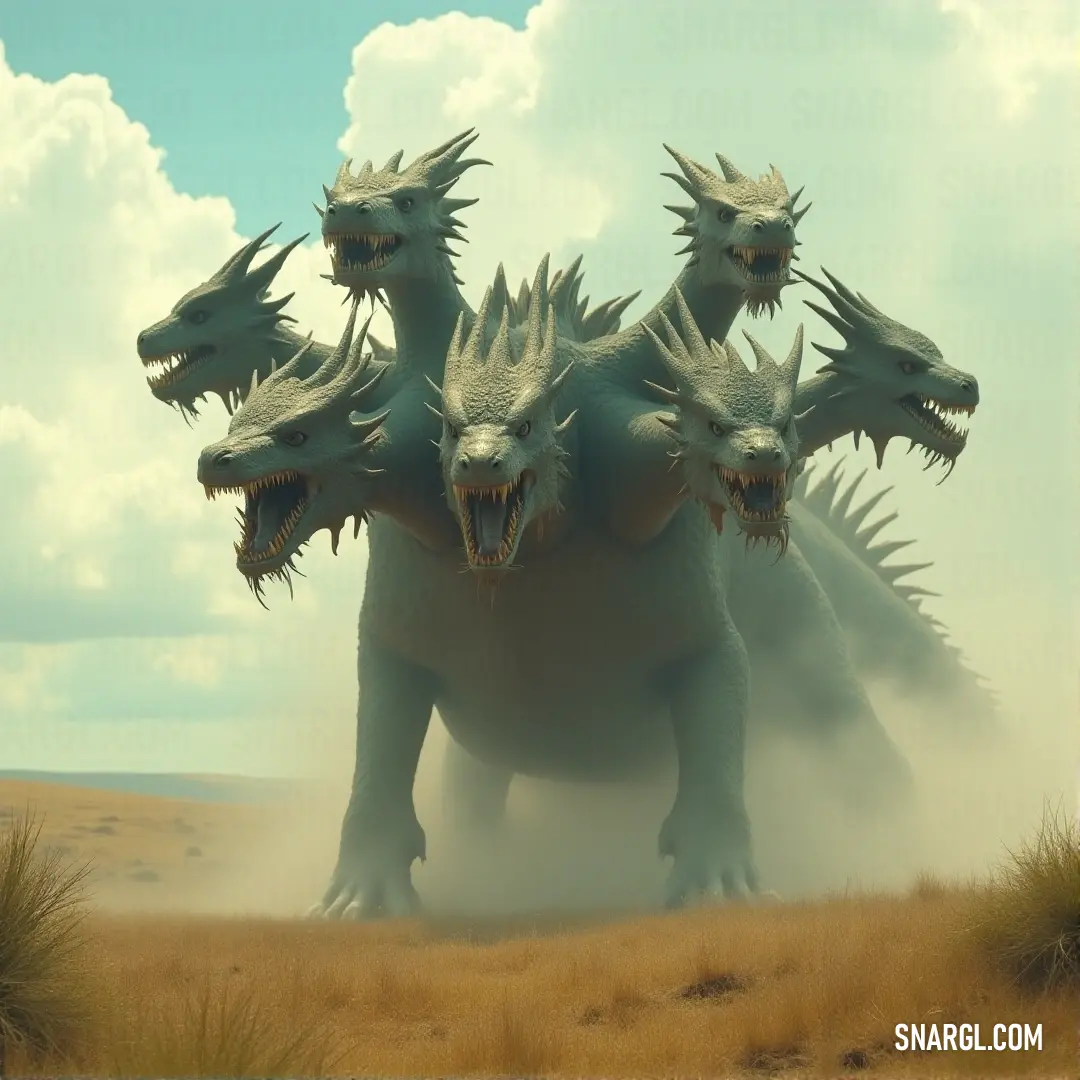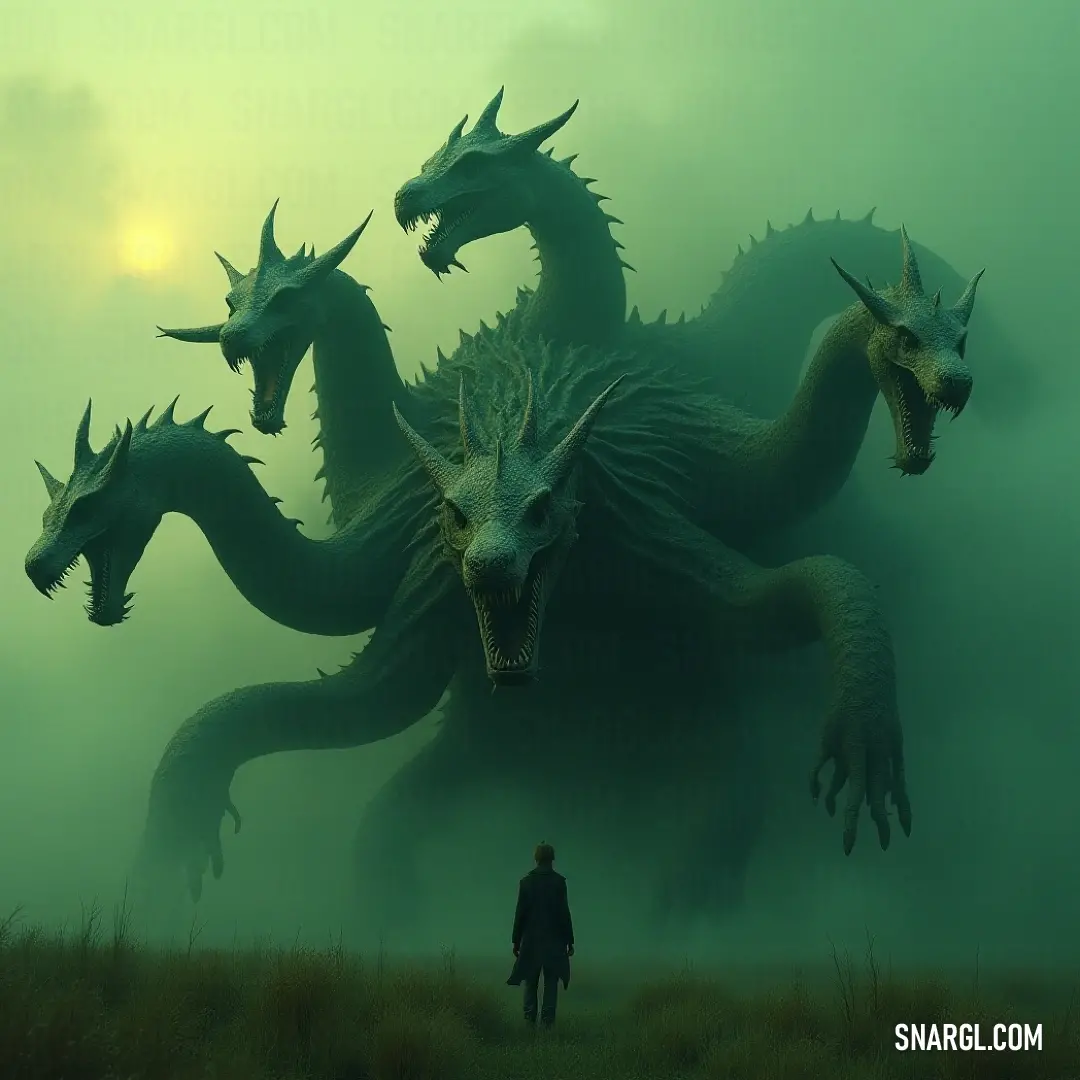In a far away place, in the shadowed dawn of the world, when the earth was but a canvas of raw potential and the cosmos was an undulating sea of primal forces, the great Eclipsed Genesis unfolded - a tale of ancient origins and celestial strife that birthed the fantastical creatures of myth and legend.
In those days, the world was dominated by the Celestials, beings of immeasurable power who wove the fabric of existence with threads of light and shadow. Among them, Aetherion, the Celestial of Creation, sought to imbue the world with life. Yet his sibling, Nocturnis, the Celestial of Chaos, harbored a vision of entropy and destruction. Their eternal struggle for dominion over the cosmos ignited a cosmic conflict that reverberated through the realms.
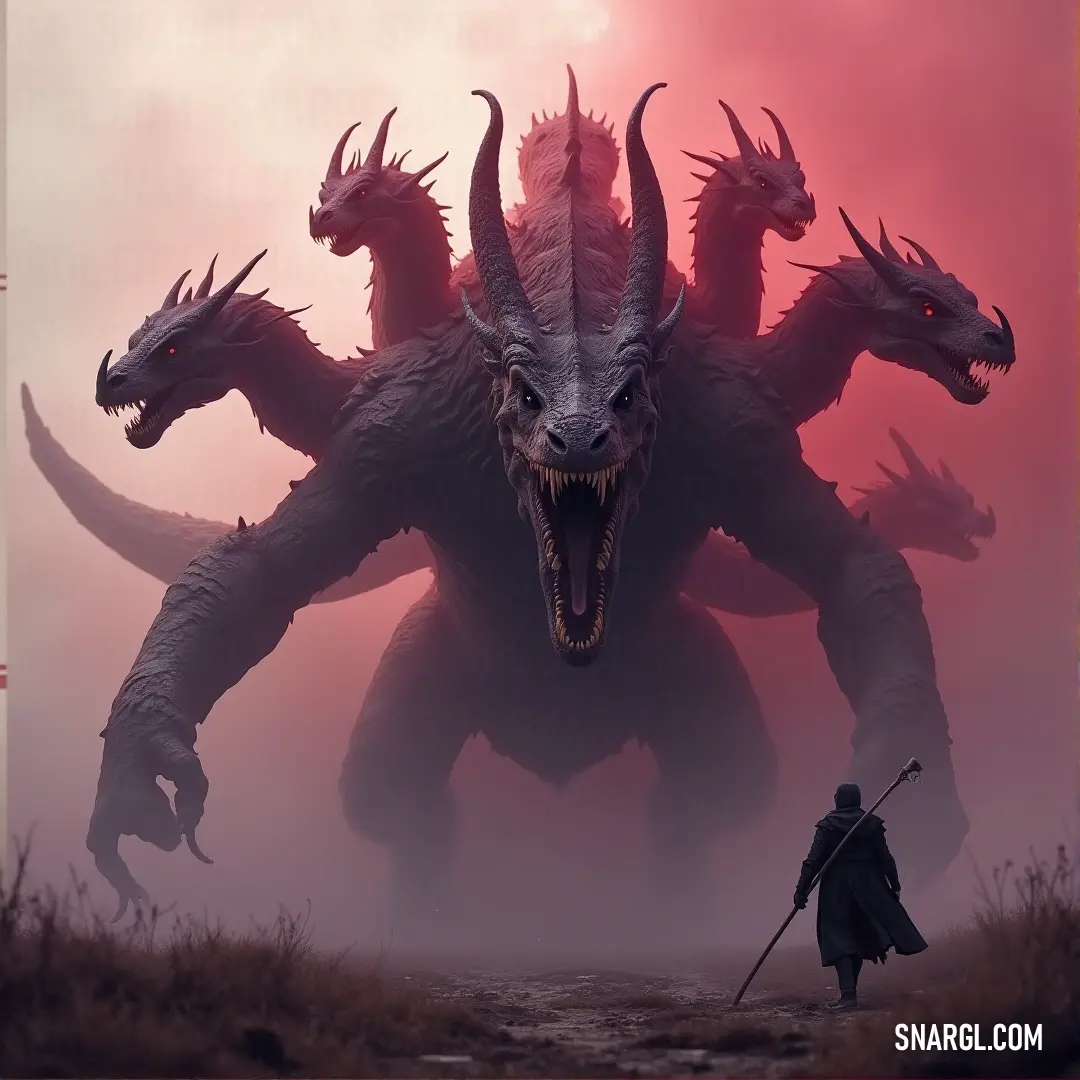
Together, the Bane Hydra and its towering companion stand ready for battle, an intimidating force of mythical power.
Aetherion, in his quest to create a balance of harmony, shaped the world with his divine craftsmanship. He sculpted majestic mountains, expansive oceans, and verdant forests, populating them with creatures of grace and beauty. The Earth's beauty was a testament to his divine artistry, and among his creations were the majestic griffins, the wise dragons, and the serene unicorns.
Yet Nocturnis, driven by his insatiable hunger for chaos, unleashed a tide of primal energies upon the world. The very essence of his wrath twisted the order of Aetherion's creations. In the churning chaos, monstrous beings began to emerge, creatures born from the very fabric of discord.
Thus, the Hydra came into being - a serpentine terror with many heads, each one a serpent's visage breathing venom and malice. The Hydra was not merely a creature but a manifestation of Nocturnis's desire to corrupt and challenge the harmony that Aetherion had established. As the Hydra slithered through the ancient forests, it was said that its very presence warped the land, leaving a trail of decay and despair.
In response to the Hydra's menace, Aetherion created the Phoenix, a creature of rebirth and purity. The Phoenix soared through the skies, its fiery plumage a beacon of hope and renewal. Where the Hydra brought ruin, the Phoenix sowed the seeds of renewal, their battles a constant dance of creation and destruction.
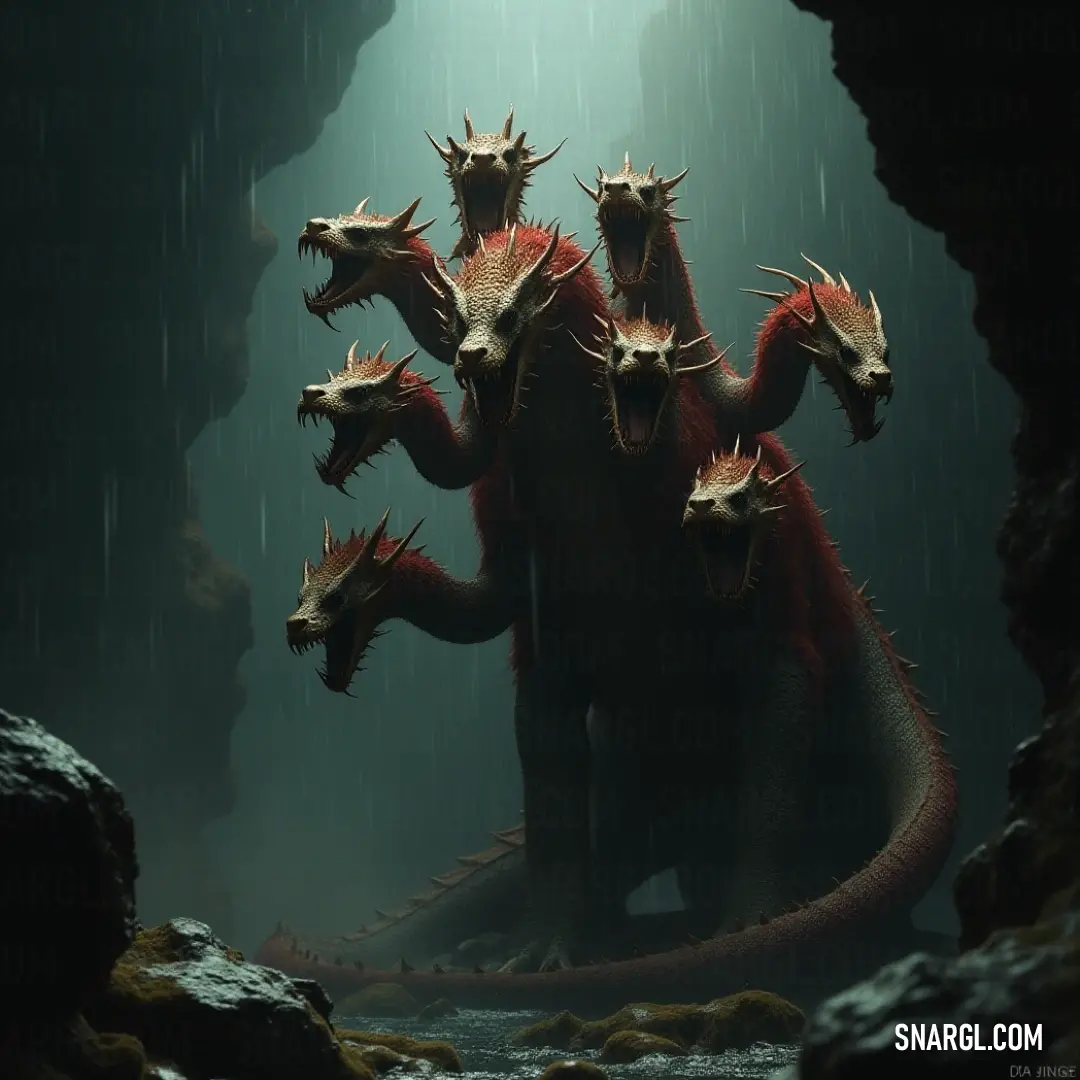
Explore the captivating world of the Regal Hydra statues as they stand joined in solemnity amid the dripping rain. The cave's ambiance entwines with ancient legends, sparking the curiosity of those who wander close.
Among the first Celestials to confront Nocturnis's twisted creations was Seraphel, the Celestial of Valor. With her radiant armor and the celestial blade Seraphim, Seraphel ventured into the heart of the chaotic storms. Her battles with the Hydra were fierce and unyielding, and through each victory, she quelled the spread of chaos, though she knew well that the struggle was eternal.
The Eclipsed Genesis saw the rise of other creatures, born of Nocturnis's dark imagination: the Chimera, a beast with the head of a lion, the body of a goat, and the tail of a serpent; and the Minotaur, a creature of brute strength and labyrinthine fury. Each was a testament to the chaotic forces unleashed by Nocturnis.
Yet, the celestial struggle was not without resolution. In a climactic battle, Aetherion and Nocturnis clashed in the heavens, their cosmic struggle shaking the very foundations of existence. The conflict was such that it caused an eclipse, a moment when the world was caught between light and darkness, chaos and order.
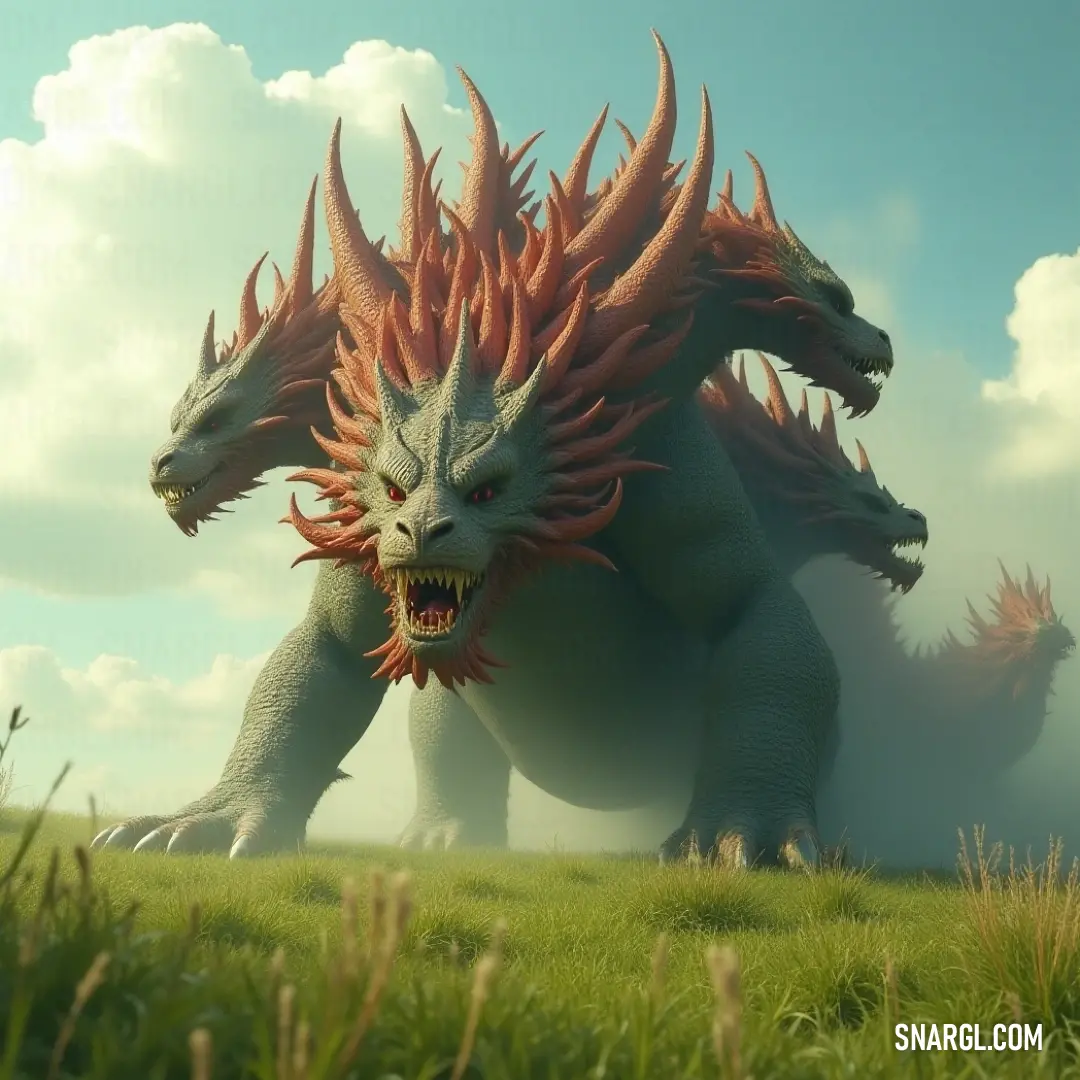
Majestic and formidable, Giant King Ghidorah's stunning features captivate the viewer, transforming the landscape into a realm of wonder, where legends spring to life with an air of awe-inspiring might.
During this eclipse, the Celestials forged an uneasy truce. They agreed that the world would be a realm of balance - where creation and chaos coexisted, their forces eternally intertwined. From this compromise, the creatures of the world took on their roles, embodying the dual nature of existence.
Thus, the Hydra, the Phoenix, and all the other mythical beings found their places in the tapestry of the world. They became symbols of the eternal struggle between order and chaos, each embodying the profound truths of their celestial origins. The creatures of the Eclipsed Genesis were not mere entities of myth, but the very reflections of the cosmic forces that shaped their world.
And so, the Chronicle of the Eclipsed Genesis endures - a timeless tale of creation, conflict, and the eternal dance between light and shadow. It reminds the world of its origins and the celestial forces that gave rise to the wondrous and fearsome creatures that roam its realms.

